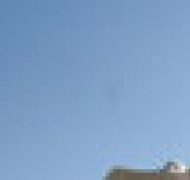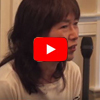Faith at Work, Part 7: Putting It All Together
Blog / Produced by The High Calling
Part 1, Part 2, Part 3, Part 4, Part 5, Part 6, Part 7
Figuring out how to integrate our faith with our work is a primary interest for the High Calling community. In our series about the work of Laity Leadership Institute Senior Fellow David W. Miller, we learned about four ways people do this and about a Hebrew concept that Miller says undergirds the Faith at Work movement.
Investigating the Sunday/Monday Gap
In the first article, we learned that Miller was flourishing in his career as a senior executive and partner at a London bank, and felt called to that career. But he seldom, if ever, heard clergy talk about how to integrate faith and work, even as he intuitively viewed work as part of God's created order. If work mattered to God, why weren't clergy talking about it?
To his surprise, Miller gradually discerned a new calling to attend Princeton Theological Seminary, where he earned an MDiv. and then a PhD. in Social Ethics, focusing almost exclusively on the question of integrating faith and work. This question continues to be central to his teaching and research at Princeton University, and to his consulting work with CEOs and businesses.
“I suppose people are drawn to study things either because they’re really good at it or because they’re not really good at it. I was drawn to this subject of integrating faith and work because of my own professional experience of asking how to overcome the Sunday/Monday gap,” said Miller.
A Theological Foundation
In the second article, we learned that the Hebrew concept of avodah provides a theological foundation for Miller's work.
“The root of that word is translated three ways in the Old Testament. Sometimes it’s translated to mean ‘work,’ as in a job; other times, avodah is translated to mean ‘worship,’ as in worshiping God; the third way it’s translated is to mean ‘service,’ as in serving others. That’s what my whole calling is about: avodah,” said Miller.
“Regardless of job level or salary, today’s employees want their work to be more than just a way to put bread on the table and pay the rent. This modern quest for integration has ancient theological roots,” he said.
Uncompromising Ethics
In the third article, we were introduced to The Integration Box (TIB), an instrument that Miller developed to describe the four typical ways people self-understand what it means to bring their faith to work. For simplicity’s sake, he labeled the four quadrants of the box with descriptions beginning with the letter E: Ethics, Experience, Enrichment, and Expression.
We learned about the Ethics type (ET) through the story of Jimmy Dunne, senior managing principal at Sandler O’Neill, an investment banking firm that lost one-third of its workforce in the terrorist attacks on 9/11/01. Dunne made numerous counter-intuitive financial decisions after the tragedy to meet the needs of victims’ families. His reasoning in this crisis was typical of ETs.
Ethical actors integrate faith and work “through attention to personal virtue, business ethics, and to broader questions of social and economic justice,” wrote Miller in God at Work.
“I do see the world in black and white, but there are certain things that should be black and white,” said Dunne.
Turning Corporate Leadership Upside Down
In the fourth article, we were introduced to the Experience type (EX) through the story of former Toro CEO Ken Melrose. Melrose employed a model of servant leadership to turn the company around when it was on the verge of bankruptcy and then led it through two decades of steady growth.
Experience types view work as a calling that has both intrinsic and extrinsic meaning and purpose. “Work has the larger role of serving greater societal purposes and needs. Discovering that work can be a calling, and finding meaning and purpose in work are often significant motivators that draw business people to the [Faith and Work] movement,” Miller wrote in God at Work.
The model Melrose developed at Toro puts the employee first, the company second, and the shareholder third. Although he retired from Toro five years ago, it’s still operating from this model and doing “terrific,” he said.
Drawing Enrichment from Deep Wells
In the fifth article, we were introduced to the Enrichment type (EN) through the story of Dale Jones, who is a vice chairman and partner at Heidrick & Struggles, one of the nation’s top executive search firms.
ENs manifest their spirituality at work through “interior disciplines, practices, and habits (e.g. prayer, meditation, contemplation) that provide comfort, healing, and strengthen the soul to handle the rigors of the workplace,” Miller said.
It was as a student at Morehouse College that Jones began gathering with other Christians to think through his values and it was there that he developed the conviction that he was called not only to do well, but to do good. When he finished college, Jones spent time with other business people who were trying to reconcile faith, business, community and service. Seeing them integrate their faith with their work gave him the freedom to do the same. He is now active in several CEO fellowship groups, gathering with peers to reflect on integrating faith and work in the rough and tumble world of business.
“I think if I didn’t have them, I’d probably go wandering, as we’re wont to do,” said Jones.
Expressing Spiritual Values
In the sixth article, we were introduced to the Expression type (ES) through the work of Max Anderson, who was among a group of 2009 Harvard Business School graduates that developed the MBA Oath.
ES types value the ability to “express or communicate their faith tradition and worldview (be it sacred or secular in nature) to others at work,” said Miller. This expression may manifest itself in word, deed, or attire, and the goal may be to persuade others to join one’s faith tradition or adopt one’s worldview. It could also “simply be to freely live out who one is.”
“Oaths are really powerful in our culture,” said Anderson.
“I think that you need to put a flag in the ground and say very clearly this is the way it ought to be and what we’re aiming for. By doing that you make possible what seems improbable,” he said.
Everywhere Integrators
In God at Work, Miller identified a fifth type that he called the Everywhere Integrator type (EI). This label is used to describe individuals and groups who don’t fit easily into one of the other four categories. EIs “view several if not all manifestations of integrating faith and work as part of a mature or aspirational state,” said Miller. They may be grounded in a primary type, but move among the quadrants with equal comfort and importance.
Laity Lodge is typical of an Everywhere Integrator group, Miller said, because its goals and programs operate in all four quadrants.
The Integration Box model has the potential to help people move out of the “often limiting and divisive ways” of thinking about faith at work that are typical of theologically and politically polarized discourse, said Miller. He and his research team have developed a TIB online self-assessment survey (which is in the final stages of the validation process) to help businesses and individuals find constructive ways of understanding themselves and others.
“The integration of faith and work, when done in healthy, respectful, and appropriate ways and with the recognition that we live and work in a pluralistic culture, is a good thing,” Miller concluded in God at Work. His own story and those he shared with us are proof that he's right.
Image by Ed Schipul. Used with permission. Sourced via Flickr.
Laity Leadership Institute Senior Fellow David W. Miller is founding Director of the Princeton University Faith & Work Initiative and an Associate Research Scholar at the university's Center for the Study of Religion. Dr. Miller spent 16 years in senior executive positions in international business and finance before entering academia and receiving his M.Div. and Ph.D. in Social Ethics. He is the author of God at Work: The History and Promise of the Faith at Work Movement and writes for The Avodah Institute's Faith & Work Blog.





